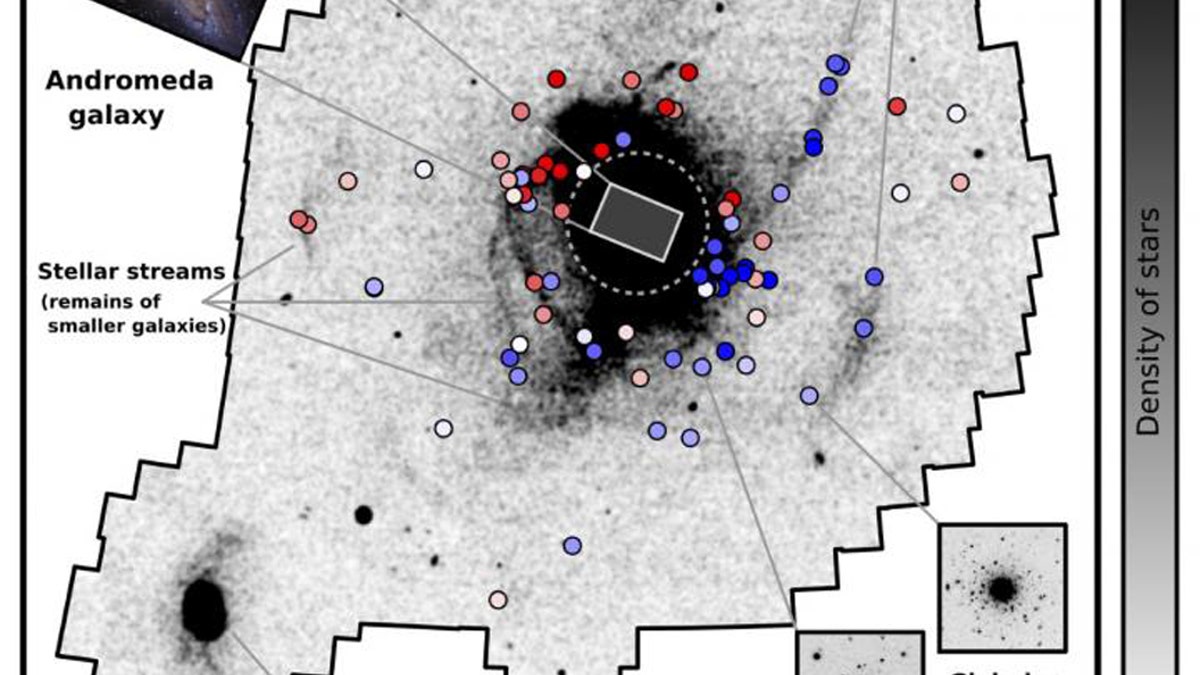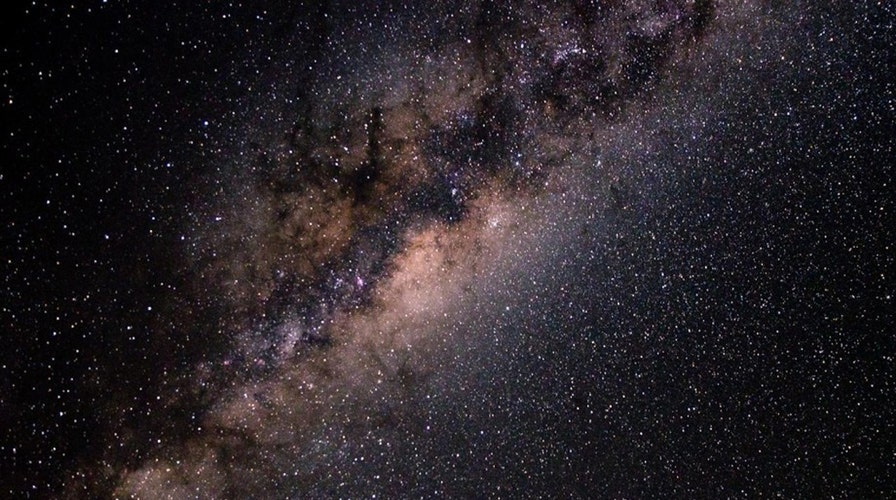Fox News Flash top headlines for Oct. 3
Fox News Flash top headlines for Oct. 3 are here. Check out what's clicking on Foxnews.com
The home to all life as we know it, the Milky Way galaxy, is on a "collision course" with its cosmic neighbor, Andromeda, according to a new study. But you needn't fret, astronomers say — it won't happen for about 4.5 billion years.
The research noted that Andromeda's size, significantly larger than the Milky Way, likely makes it a "cannibalistic" neighbor, swallowing up more galaxies in its past than it was previously given credit for.
"The Milky Way is on a collision course with Andromeda in about four billion years. So knowing what kind of a monster our galaxy is up against is useful in finding out the Milky Way's ultimate fate," said Australian National University researcher Dougal Mackey in a statement.

Andromeda has eaten several smaller galaxies, likely within the last few billion years, with left-overs found in large streams of stars. (Credit: Dougal Mackey, ANU)
'MYSTERIOUS RADIO BURSTS' IN OUTER SPACE DETECTED BY ALIEN-HUNTING ARTIFICIAL INTELLIGENCE
"Andromeda has a much bigger and more complex stellar halo than the Milky Way, which indicates that it has cannibalized many more galaxies, possibly larger ones," Mackey added.
Mackey and the other researchers used five telescopes to make their observations, noting that at least two clusters of stars in Andromeda's orbit did not match each other, nor the rest of the galaxy.
"We interpret these separate cluster populations as arising from two major accretion epochs, probably separated by billions of years," the study's abstract noted.
The 92 star clusters that were previously identified were 81,000 light-years away from Andromeda's center. Of the 92 clusters, 77 were in one group, moving perpendicular to the galaxy's disk, while the other group orbited at a 90-degree angle.

A view of the Andromeda galaxy, also known as M31, with measurements of the motions of stars within the galaxy. This spiral galaxy is the nearest large neighbor of our Milky Way. (ESA/Gaia (star motions); NASA/Galex (background image); R. van der Marel, M. Fardal, J. Sahlmann (STScI))
"By tracing the faint remains of these smaller galaxies with embedded star clusters, we've been able to recreate the way Andromeda drew them in and ultimately enveloped them at the different times," Mackey said.
The research has been published in the scientific journal Nature.

